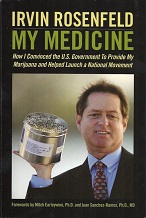In states where medical marijuana is legal, a new study finds that fewer motorists killed in traffic accidents test positive for opioids—providing further evidence that cannabis medicine brings about a reduction in the use of prescription painkillers.
Researchers from Columbia University’s Mailman School of Public Health say that in a recent investigation of federal data involving motor vehicle accidents, they found fewer drivers who died as a result of a fatal automobile accident tested positive for opioids in those states that have passed laws allowing marijuana to be used for medicinal purposes.
“We would expect the adverse consequences of opioid use to decrease over time in states where medical marijuana use is legal, as individuals substitute marijuana for opioids in the treatment of severe or chronic pain,” lead study author June H. Kim said in a press release obtained by the Washington Post[1].
Researchers concluded that the analysis[2], which was published this week in the American Journal of Public Health, provided significant proof that “in states with medical marijuana laws, fewer individuals are using opioids.”
This is not the first time a study has emerged suggesting a decrease in opioid use in states with medical marijuana laws on the books.
Over the summer, a study published in Health Affairs[3] found that prescription drug claims (Medicare Part D) in medical marijuana states are on the decline. Researchers from the University of Georgia concluded that, “the use of prescription drugs for which marijuana could serve as a clinical alternative fell significantly, once a medical marijuana law was implemented.”
This data might help explain why the pharmaceutical industry[4] is working to prevent marijuana legalization from happening in some states. It was recently revealed that Insys Therapeutics chipped in a whopping $500,000 to combat a recreational marijuana ballot measure in Arizona. Ironically, this is the same drug manufacturer that recently won approval[5] from the U.S. Food and Drug Administration (FDA) to manufacture a synthetic form of marijuana (dronabinol) to be marketed to AIDS and cancer patients.
Despite medical marijuana being legal in over half the United States, the federal government is still not ready to loosen some of the restrictions that have prevented the herb from being studied to find its true therapeutic benefit. The DEA announced months ago that it was once again denying a petition[6] to downgrade the Schedule I listing of the cannabis plant because the FDA says it is not safe and effective medicine—even though this agency has allowed Big Pharma to market synthetic versions of it for years.
Meanwhile, the United States is currently immersed in an opioid epidemic[7] of immense proportions. Some of the latest statistics from the Centers of Disease Control and Prevention shows that tens of thousands of people are dropping dead every year from overdoses on prescription painkillers.
Incidentally, there have never been any reports of a marijuana overdose death.
References
- ^ the Washington Post (www.washingtonpost.com)
- ^ analysis (ajph.aphapublications.org)
- ^ study published in Health Affairs (hightimes.com)
- ^ pharmaceutical industry (hightimes.com)
- ^ recently won approval (hightimes.com)
- ^ denying a petition (hightimes.com)
- ^ opioid epidemic (www.cdc.gov)
Read more http://hightimes.com/news/federal-data-shows-medical-marijuana-could-be-taming-opioid-epidemic/
Latest
Coronavirus Strikes Massachusetts Cannabis Company Employees
Reassessing the Essential: Cannabis in the Time of a Pandemic
5 Reasons To Try Aspen Valley CBG Flower (30% Off)
High Times Cannabis Cups Go Virtual In Wake Of Coronavirus Pandemic
Drug Enforcement Administration Proposes Plan To Expand Cannabis Research
Ghana Legalizes Cannabis For Medicinal And Industrial Uses
The cheapest legal weed in Canada: Discover these cannabis ‘value brands’
Cannabis and coronavirus: Here’s what you need to know
cannabis designs
The Best Of
WHO Rules CBD Should Not Be a Scheduled Drug

Dr Cristina Sanchez PhD video interview on medical marijuana and cancer

Biochemist Dennis Hill interview; Cannabis oil as a cure for cancer.

The unofficial World Record holder for cannabis smoking part 1





